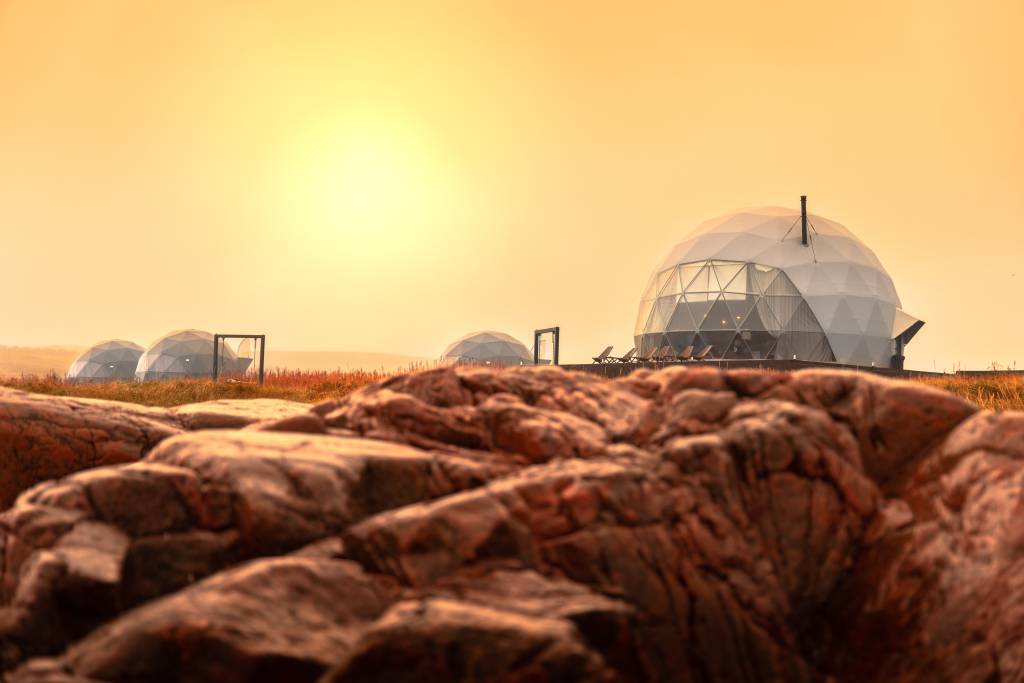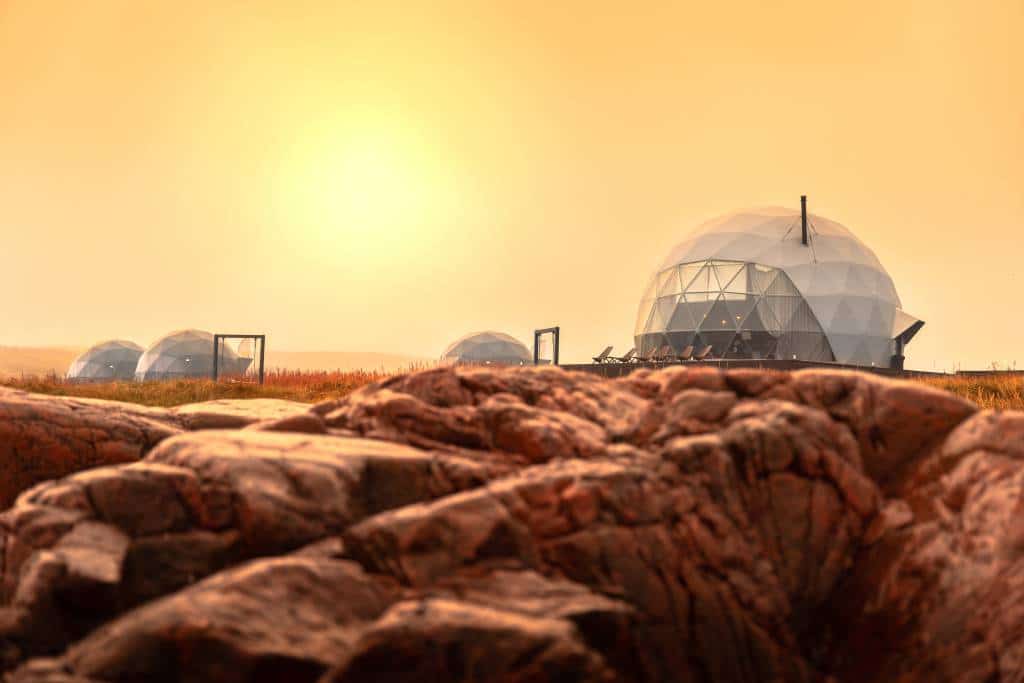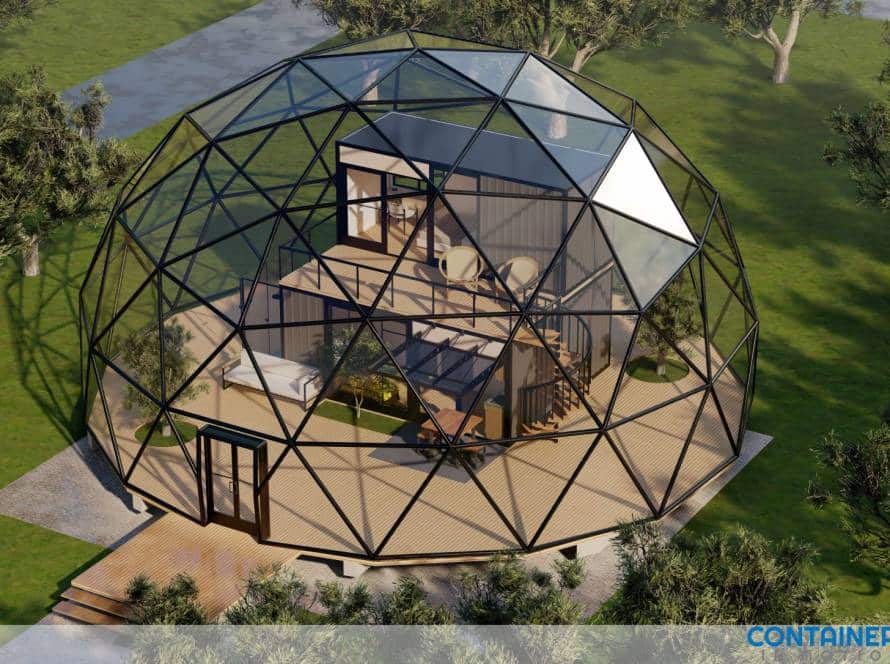For many years, Mars has fascinated astronomers, scientists, and space enthusiasts. The possibility of life and settlement on the red planet has been investigated, and thanks to recent advancements in technology, the ambition of establishing a city on Mars is now a reality. In this article, we’ll examine the prospect of building Mars’s first city using glass domes, one of the most intriguing concepts for a Martian city.
SpaceX’s Mars colonisation design, Elon Musk’s Mars colonisation initiative, intends to construct a self-sustaining city on the red planet. Musk has talked about the idea of building glass domes on Mars as part of his project, which would offer a controlled environment for people to live in and grow food. The purpose of the glass domes is to shelter people from the harsh circumstances of Mars, such as the absence of an atmosphere, extremely high temperatures, and high radiation levels, in order to establish a livable habitat there. Humans would be able to live and work within the domes since they would be pressurized and equipped with life support systems. The glass domes are only one element of Musk’s wider Mars colonization plan, which also includes building reusable spaceships, setting up propellant manufacturing facilities on the planet, and eventually constructing a self-sustaining human community.
Elon Musk, a well-known business mogul and entrepreneur who has been involved in a variety of inventive and interesting projects throughout the course of his career, launched SpaceX with the intention of lowering the cost of space travel and ultimately populating Mars with the use of glass domes, Similarly, Barry Sendach, the CEO of Dyester, is not only a successful businessman and skilled public speaker who has addressed investors and instructed at colleges, but he is also a passionate man who, found the enchantment of domes, yurts, and tentspaces. He is adamant that everyone has the ability to make their planet a better one. Sendach launched Domespaces, which has developed into the top dome maker in America and across the world, using his knowledge of design and quality. Domespaces was chosen and broadcast twice on national television, and as a result, executive producer Richard DiPilla and producer Blake Woolwine asked Sendach to serve as the foremost authority on domes for their future trip documentary, which will be created by the famous studio How 2 Media.
Lets come back to the topic, It’s not a novel concept to construct a glass-domed city on Mars. In reality, it has been debated for a long time, and several prototypes are already under construction. The primary concept is to build a network of connected glass domes that would act as residences, research facilities, and entertainment areas. The pressurized domes would provide a regulated environment in which people, animals, and plants could all flourish. Glass domes, would shield the occupants from solar wind and cosmic radiation while allowing sunlight to enter. Solar panels might harness the sun’s energy for power generation while also giving residents access to natural light. The domes may be pressurized, which would make the inside breathable and control the temperature.

Glass domes could be used for a variety of purposes by the inhabitants of Mars, such as:
Creating a controlled atmosphere for agriculture: Glass domes might be used to develop a controlled atmosphere for raising crops on Mars, protecting the plants from the hostile Martian climate and allowing them to develop in a controlled atmosphere with the right lighting and temperature.
Living space creation: Glass domes might be utilized to build dwellings for Martian settlers. To offer a suitable living environment, these glass domes might be pressurized and climate-controlled.
Radiation shielding: Because Mars lacks a strong magnetic field and has a thin atmosphere, the planet’s surface is constantly exposed to dangerous solar and cosmic ray radiation. To shield against this radiation and provide a secure environment for habitation, glass domes may be created.
Scientific Research: Glass domes might be utilized as a base for scientific research on Mars, enabling researchers to carry out experiments and study the planet’s surface and atmosphere from a regulated environment.
Tourism Spot: Mars could someday become a well-liked vacation spot because of tourism. In order to give tourists a chance to experience life on an alien planet, glass domes might be utilized to build tourist lodgings. https://domespaces.com/glass-domes-the-astronauts-shelter-on-mars/ provides insights on Glass domes on Mars, which can also be helpful for your understanding.
These are what you must know about the Life on Mars
- How long does it take to get to Mars? Or How long would it take to get to Mars?
The alignment of Earth and Mars in their orbits, the speed of the spacecraft, and the course chosen all affect how long it will take to reach Mars. Travel time between Earth and Mars typically ranges from 150 to 300 days, depending on the launch window and the specific mission’s configuration. As an example, the Perseverance rover from NASA took around 203 days—or 6.5 months—to travel from the time of launch on July 30, 2020, to the time of landing on Mars on February 18, 2021. To go to Mars, though, would be doable in as little as 100 days during some launch windows, while it might take more than a year during others. - How many moons does Mars have? Or How much moons does mars have?
Phobos and Deimos are two of Mars’ moons. - How far is Mars from Earth? Or How far away is Mars? Or How long to get to Mars?
Depending on where they are in their own orbits around the Sun, Mars and Earth’s distance from the Sun fluctuates. Mars and Earth can be 38 million miles (61 million kilometers) apart at their opposition, or closest approach. When they are on different sides of the Sun, at their farthest, the distance between them can reach up to around 250 million miles (401 million kilometers). Mars and Earth are separated by 140 million miles (225 million kilometers) on average. - What is the population of Mars? Or How many people live on Mars?
There are no people living on Mars right now. No people have yet been deployed to live permanently on the planet, despite the fact that several missions to Mars have been launched by various space organizations, including NASA’s current Perseverance rover mission. The population of Mars will eventually rely on the number of people sent to live and work there, which is presently unknown, assuming humanity does establish a permanent presence there. - Why is Mars red? Or What color is Mars?
Mars appears red because of a coating of iron oxide, sometimes known as rust, that covers its surface and gives it a reddish tint. The iron-rich rocks and soil of Mars are weathered by exposure to the planet’s weak atmosphere and severe solar radiation, which results in the formation of iron oxide on the surface. Mars’ red tint stands out in the sky as it is getting ready to pass by Earth and appears as a dazzling, reddish-orange object. This has caused Mars to be referred to as the “Red Planet” and made it a well-liked object of scientific investigation and research. Also Consider visiting https://domespaces.com/glass-domes-the-future-of-homes/ to learn more about Glass domes.
A tremendous amount of money, time, and effort would also need to be put into building such a city with glass domes. However, the advantages of establishing a human presence on Mars could be enormous, including the exploration of new frontiers, scientific advancements, and the opportunity colonization of other planets in the near future. Therefore, let’s compile some related inquiries about glass domes, Mars, and their responses:
1. Would domes work on Mars?
Yes, domes could potentially work as a kind of human housing on Mars. The possibility of constructing domes or other kinds of homes on the red planet is already being investigated by a number of space organizations and commercial businesses.
2. What would Mars domes be made of?

The selection of construction material would be based on a number of variables, such as price, availability, and compatibility with the Martian environment. Depending on the exact needs of the project, more than one material may be utilized to build domes on Mars. Here are some examples:
Regolith: The loose dirt and rock that covers Mars’ surface is known as regolith. It is an appealing choice for construction material since it is plentiful and easily accessible. Bricks made from regolith might be used to construct domes and other buildings.
Ice: Water ice is plentiful on Mars and might be utilized for construction. Ice could be mined, formed into bricks or blocks, and then used to build domes. Ice would further have the advantage of acting as protection from the harsh Martian atmosphere.
Synthetic materials: It is possible to transfer different synthetic materials to Mars and make use of them to build domes. For example, inflatable buildings that could be inflated with breathing air may be made using polyethylene. Although these structures would be portable and lightweight, they would also need a frame or other support system to keep their shape.
Composite materials: Dome structures might be built on Mars using composite materials like carbon fiber or fiberglass. These materials are perfect for usage in a severe environment since they are sturdy, light, and long-lasting. They would be more expensive and challenging to transport to Mars, though.
3. Is Elon Musk building a city on Mars?
The CEO of SpaceX, Elon Musk, has long been in favor of the idea of creating human settlements on Mars. His ultimate objective is to establish a self-sufficient city on the red planet with a million inhabitants. But the process of establishing a city on Mars is a long-term and difficult task that requires significant technological advancements, resources, and international cooperation.
4. How does Elon plan on making Mars habitable?
Musk’s concept for terraforming Mars is still in its early stages and would require major financial investment as well as technological breakthroughs. The possibility of humans eventually establishing a permanent presence on Mars is highlighted by his ambition to terraform the red planet. The following are some of the essential stages in Musk’s proposal to terraform Mars:
Increase the planet’s atmospheric pressure: Mars’s atmosphere is too thin for human existence. The method Musk has suggested is known as “terraforming by nukes,” and it entails a succession of nuclear bombs being dropped at the world’s poles in order to release carbon dioxide and methane gases, which would thicken the atmosphere and warm the planet.
Create heat: Mars, a frigid planet with an average temperature of -63 degrees Celsius (-81 degrees Fahrenheit), needs to be heated. Musk has suggested utilizing a network of mirrors or other reflective materials to reflect sunlight onto the surface of the earth and produce heat.
Introduce plants: By releasing oxygen and absorbing carbon dioxide, plants may be a crucial part of terraforming. Musk has suggested employing genetically altered plants that are suited to the Martian climate to aid in the creation of a livable atmosphere.
Construct a magnetic field: Mars lacks one, which would shield it from the sun’s radiation, which is dangerous for people to be exposed to. A massive magnetic field generator or a system of magnets have both been suggested by Musk as ways to construct an artificial magnetic field around the globe.
Build self-sustaining cities: Musk’s long-term objective is to establish on Mars self-sufficient urban centers that can generate their own energy, water, and other resources. A multitude of technologies would be needed for this, including 3D printing, renewable energy sources, and closed-loop systems for recycling garbage and other resources.
The concept of constructing a glass-domed city on Mars has captivated the imagination of many and is being actively researched by scientists and engineers throughout the world, even if it is still primarily in the realm of science fiction.



